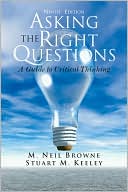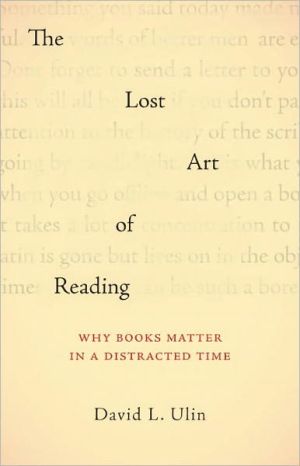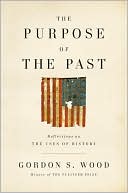The Witch's Flight: The Cinematic, the Black Femme, and the Image of Common Sense
Kara Keeling contends that cinema and cinematic processes had a profound significance for twentieth-century anticapitalist Black Liberation movements based in the United States. Drawing on Gilles Deleuze’s notion of “the cinematic”—not just as a phenomenon confined to moving-image media such as film and television but as a set of processes involved in the production and reproduction of social reality itself —Keeling describes how the cinematic structures racism, homophobia, and misogyny, and,...
Search in google:
Through an analysis of filmic representations of Black femininity, and the Black Femme in particular, this book highlights the ways "the cinematic" structures both racist and sexist portrayals, and their potential undoing.
The Witch's Flight\ The Cinematic, the Black Femme, and the Image of Common Sense \ \ By Kara Keeling \ Duke University Press\ Copyright © 2007 Duke University Press\ All right reserved.\ ISBN: 978-0-8223-4025-6 \ \ \ Chapter One\ An appeal to the visual is not uncomplicated or innocent. As theorists we have to ask how vision is structured, and, following that, we have to explore how difference is established, how it operates, how and in what ways it constitutes subjects who see and speak in the world. This we must apply to the ways in which black women are seen and not seen by the dominant society and to how they see themselves in a different landscape. But in overturning the "politics of silence" the goal cannot be merely to be seen: visibility in and of itself does not erase a history of silence nor does it challenge the structure of power and domination, symbolic and material, that determines what can and cannot be seen. -EVELYNN HAMMONDS, "Black (W)Holes and the Geometry of Black Female Sexuality" \ The Image of Common Sense\ In The Witch's Flight I seek to carve out alternative ways of thinking about how communicative technologies "not only express, but also organize the movement of globalization." To provide a way of demonstrating the perceptual (and cognitive) processes demanded and engendered by globalizing capital, I interrogate how "we" (late-twentieth-century subjects within capitalism and its global structures of command who are geographically located -and/or intellectually constituted-within the "belly of the beast," particularly in the United States but also in other so-called developed countries) might make sense of films. Processes of "cinematic perception" enable us to consume cinematic images wherever and however such images are found.\ Cinematic perception is not confined to interactions with moving-image media such as film and television. Involved in the production and reproduction of social reality itself, these perceptual and cognitive processes work to order, orchestrate, produce, and reproduce social reality and sociality. In other words, in addition to operating in and through the variety of technological apparatuses for the "mechanical reproduction" or "electronic transmission" of objects as images, cinematic processes govern (in the sense of exercising continuous sovereign authority over) the selection of which images can appear and of what is likely to be perceptible in their appearance. They designate a specific perceptual schema that is adequate to the task of perceiving those images and that corresponds to a "matter" that is itself cinematic. Neither cinematic perceptual schemas nor cinematic matter precedes the other. Together they constitute the cinematic, an assemblage that might also be referred to as "twentieth-century reality" because we neither posit nor access "reality" except via these processes, which were perfected by film.\ A film starts. A viewer creates various circuits between the present perception of the set of images that the film comprises and past memory-images available to make sense of the film. Although these circuits are open, attentive recognition seeks to conform present perceptions to past memory-images by pummeling the fullness of each into the molds of the other. Clichés will come to predominate perceptions under conditions wherein one's set of memory-images is already a set of clichés or, speaking more broadly, when that set consists of collective images, experiences, traditions, knowledges, and so on, and when the bodily habituation that determines perception has been made common through "affectivity."\ Henri Bergson's understanding of "affection" informs my thinking about the centrality of affect to cinematic processes. In Matter and Memory Bergson takes "pain" to be paradigmatic of "affect." He claims that when a thing acts on one's body, the division of labor in one's body is such that certain elements are sensory and immobile while others are mobile, functioning to move the body as a whole. The job of the sensory and immobile elements is simply to transmit stimulation to the body's motor elements that execute the reaction. The sensory elements must do so and remain immobile because the body can move as a whole only through the labor of the mobile elements. As Bergson explains, pain (or affect more generally) is "a kind of motor tendency in a sensitive nerve," an unavailing effort of the sensory apparatus to recoil from the stimulation. He suggests that "every pain is a local effort, and in its very isolation lies the cause of its impotence, because the organism, by reason of the solidarity of its parts, is able to move only as a whole" (ibid.). Affect intervenes in the movement of the body when "the interested part" of the body, "instead of accepting the stimulation, repels it" (ibid.).\ That effort marks the body's power to absorb stimulation or movement. Affect, understood as the intervention of the interested part of the body, is a form of labor that is intrinsic to the body's self-constitution. While one's perception measures the possible or virtual action of a thing on one's body, affection can be understood initially as the moment in which one's perception ceases to measure an object's potential action upon one's body and begins to sketch out the object's actual action. Affection is the point at which the body to be perceived is one's own body; it thus locates the emergence of a real action. The difference between affection felt and image perceived is thus one of degree, not of kind. Bergson explains, "Between the affection felt and the image perceived there is this difference, that the affection is within our body, the image outside our body. And that is why the surface of our body, the common limit of this and other bodies, is given to us in the form both of sensations and of an image" (234).\ If pure perception exists in the aggregate of images, affection is the activity whereby one's own body is adopted as a privileged image around which other images arrange themselves according to their possible actions upon that body. Through affection, each living image comes to define its own body by differentiating it from other images in the fact that it can be felt from within, by affective sensations caused by the body's actual effort on itself.\ It is therefore through affection that pure perception is made into individual perception. An affection posits one's skin as the boundary between the inside and the outside of one's body. In so doing, it necessarily modifies the pure perception that exists in things by positing one's body as a center of indeterminate action around which are grouped all the other images which might affect it. "Affection is, then, that part or aspect of the inside of our body which we mix with the image of external bodies; it is what we must first of all subtract from perception to get the image in its purity" (58). In matter, there is "something more than, but not something different from, that which is actually given" (71).\ That affection results in the constitution of one's own body suggests that the body is able to store actions of the past in the form of "motor contrivances." Such motor contrivances determine the variety and complexity of one's body's reaction, depending on past experiences. The fact that one's body is capable of habituated responses points toward the existence of the past in the form of motor mechanisms. If this were not the case, one could not differentiate one's body from the aggregate of images because each affection would be simply a singular present sensation.\ Clichés provide a way of continuing movement because, in the face of a present perception that affects the sensory elements, they reestablish a relation between the sensory and the motor elements of the sensory-motor schema, allowing for recognition to occur and present movements to continue. Were the sensory-motor apparatus to be overwhelmed by a present perception, were motor movement not to be continued by recognition, a different kind of movement could occur.\ In Deleuze's terms, that different kind of movement is thinking. Deleuze's interest in cinema's time-image lies precisely in its potential for thought-in cinema's ability to tear a "real image from clichés"-an operation that breaks the sensory-motor link and extends a perception not into a motor action, but into thought. In his work on cinema Deleuze relies upon Bergson's arguments about attentive recognition in order to explain how the movement-image might give way to the time-image. Where attentive recognition fails is, therefore, most important for Deleuze: "Bergson constantly circles around the following conclusion, which will also haunt cinema: attentive recognition informs us to a much greater degree when it fails than when it succeeds. When we cannot remember, sensory-motor extension remains suspended, and the actual image, the present optical perception, does not link up with either a motor image or a recollection-image which would reestablish contact."\ The time-image designates an "optical and sound situation" that corresponds to a perception invested by those senses which have been liberated from their duty to the motor schema, a duty to which the body's division of labor had sentenced them. In order to enter into relation with thinking, cinema's images have to confront that state to which they constantly sink: cliché.\ A cliché can be understood as a common memory-image directed onto a perception prepared according to a common sensory-motor schemata. A cliché is a type of common sense that enables motor movement to occur. Common sense, in my usage of the term, refers simultaneously to a shared set of motor contrivances that affect subjective perception and to a collective set of memory-images that includes experiences, knowledges, traditions, and so on and that are available to memory during perception. Within the framework I will be developing throughout The Witch's Flight, common-sense memory-images may enable another type of mental and/or motor movement to occur, thereby enabling an alternate perception. But, more often, common-sense memory-images provide, in the form of clichés, a way of continuing present movements.\ Deleuze defines a cliché as "a sensory-motor image of a thing." But his definition implies a weak sensory-motor connection that might be broken in any instant whatever. Deleuze argues that "we ... normally perceive only clichés." That clichés are what "we" normally perceive is the outcome of adaptation and survival: "We see, and we more or less experience, a powerful organization of poverty and oppression. And we are precisely not without sensory-motor schemata for recognizing such things, for putting up with and approving of them and for behaving ourselves subsequently, taking into account our situation, our capabilities and our tastes. We have schemata for turning away when it is too unpleasant, for prompting resignation when it is terrible and for assimilating when it is too beautiful."\ As living images, our senses are conditioned to accommodate oppression and exploitation, even our own. For Deleuze, the time-image reveals a "purely optical and sound situation," thereby providing an opportunity for a sensory perception wrenched from a habituated motor response to create a new perception. For this reason, according to Deleuze's analysis, film retains the potential to manifest an alternate perceptual schema that could perfect a different social reality.\ Walter Benjamin wrote explicitly about the role of film in training the senses to meet the demands of "modern life" and to grasp film's potential for transforming reality. The differences between Deleuze's "cinema" and Benjamin's "mechanical reproduction" are substantial and, in some respects, fundamental. In contrast to Deleuze's insistence that there has never been anything behind the image, Benjamin's work on film-in particular, "The Work of Art in the Age of Mechanical Reproduction"-is shot through with, if not a nostalgia for, at least a belief in, an original object before its mechanical reproduction into an "image" that lacks the "aura" or the uniqueness of the original object.\ In "The Work of Art in the Age of Mechanical Reproduction," Benjamin advances the theory that film corresponds to the masses' desire to transform property relations. The fascists, however, "violated the apparatus" by pressing it into the production of "ritual values." For Benjamin, mechanical reproduction is the fundamental operation of film technology. For him, film, an industrial art that brings objects closer to man, is the vehicle through which "man" might "become the object of sensuous consciousness." In positing film technology as an inherently revolutionary tool "violated" by the fascists, Benjamin differs fundamentally from Deleuze who, in seeing cinema as "the organ for perfecting the new reality," locates the interests of cinema within capital. Deleuze states his disagreement with Benjamin baldly: "What defines industrial art is not mechanical reproduction, but the internalized relation with money."\ These fundamental differences between the two men's presentation of film are indicative not only of the differences between the philosophical traditions on which each draws, but also of the historical context within which each sets out to consider film. Benjamin, for his part, was writing during the time period that Deleuze identifies in retrospect as marking the shift from the regime of the movement-image to that of the time-image. Benjamin's identification of film's role in training the human sensorium to accommodate the demands of "modern life" provides valuable insight into the historical conjuncture which saw the proliferation of clichés as the hallmark of an emergent reality.\ Benjamin distinguishes between contemplation, which is the mode of reception adequate to the traditional work of art (a painting in a museum, for instance), and film spectatorship, which is characterized by "reception in a state of distraction." In his analysis film is the "art form that is in keeping with the increased threat to his life which modern man has to face. Man's need to expose himself to shock effects is his adjustment to the dangers threatening him." Part of modern man's adjustment to the shocks constitutive of modernity involves numbing his sensory-motor apparatus in response to the shocks so that their reception becomes a function of habit, a matter of course: "For the tasks which face the human apparatus of perception at the turning points of history cannot be solved by optical means, that is, by contemplation, alone. They are mastered gradually by habit, under the guidance of tactile appropriation."\ Shock, according to Benjamin's formulation, "should be cushioned by heightened presence of mind," a mental state in which the viewer becomes a critic. Benjamin's analysis of the shock effect of film renders the critical faculties of "the masses" automatic, requiring no attention. It is through man's (a term meant to include women and children) exposure to shock effects that his sensory-motor schema (what Benjamin calls "the apperceptive apparatus") becomes capable of responding to the threats and dangers of "modern life." In Benjamin's terms film is a training ground for man's survival, for his adjustments to the dangers threatening him. Film "corresponds to profound changes in the apperceptive apparatus-changes that are experienced on an individual scale by the man in the street in big-city traffic, on a historical scale by every present day citizen."\ Benjamin relies upon a formulation of film as a "mass art," and he claims that "the growing proletarianization of modern man and the increasing formation of masses" are "two aspects of the same process." Because Benjamin's focus is on film as a mass art, he looks at film through a different lens than that employed by Deleuze. While Deleuze's focus on "masterpieces" leads him to isolate exceptional images, images capable of "tearing a real image from clichés," Benjamin is concerned primarily with how film consolidates collectivities capable of producing and surviving in such modern conditions as assembly-line factory work, big-city traffic, and war. For Benjamin, film provides a way of making man's sensory-motor apparatus adequate to the tasks confronting him in the modern world. His account provides a way of understanding cinema's role in making each sensory-motor schema common. Cinema's images "constantly sink to the state of cliché" because cinema (film technology) is a privileged participant in making each living image's apperception a function of a common sensory-motor schema or, in other words, of a "common sense."\ What interests are most readily served by such a system? Certainly, Benjamin provides fascism as one answer. But, in order to claim that his response describes the interests of all of cinema, fascism would have to be wrenched from its specific historical manifestations so that it might be better articulated as a general condition of existence throughout film's history. I will leave that project to others. Deleuze's work suggests the basis for a related but more generalizable response: cinema and "cinematic perception" serve money's interests.\ (Continues...)\ \ \ \ \ Excerpted from The Witch's Flight by Kara Keeling Copyright © 2007 by Duke University Press. Excerpted by permission.\ All rights reserved. No part of this excerpt may be reproduced or reprinted without permission in writing from the publisher.\ Excerpts are provided by Dial-A-Book Inc. solely for the personal use of visitors to this web site. \ \
Acknowledgments ixIntroduction: Another Litany for Survival 1The Image of Common Sense 11In the Interval 27"In Order to Move Forward": Common-Sense Black Nationalism and Haile Gerima's Sankofa 45"We'll Just Have to Get Guns and Be Men": The Cinematic Appearance of Black Revolutionary Women 68"A Black Belt in Bar Stool": Blaxploitation, Surplus, and The L Word 95"What's Up with That? She Don't Talk?": Set It Off's Black Lesbian Butch-Femme 118Reflections on the Black Femme's Role in the [Re]production of Cinematic Reality: The Case of Eve's Bayou 138Notes 159Bibliography 195Index 203
\ From the Publisher“Kara Keeling offers a tour de force extension of Deleuze’s writings: she understands cinema as a form of thought, as well as a motor of a shared sensorium, capable of numbing repetition as well as provocative alternative visions. No ‘Deleuzeobabble’ here, though, just sweet grooves and careful readings. With lucid and piercing argument, Keeling is a serious critic of black visual culture, following a line of powerful litanies for survival from Frantz Fanon to Angela Davis to Fred Moten.”—Amy Villarejo, author of Lesbian Rule: Cultural Criticism and the Value of Desire\ “There is a special alchemy at work in this wonderful project that transforms painstaking research and original theoretical insight into a superb understanding of the cinematic’s deeply cathected relation to blackness, gender, and sexuality. Kara Keeling watches, reads, and stitches together a tapestry that teaches us how to re-read and re-think what we thought we knew already of visual culture, of the peculiarities of our social order’s self-imagination, and of the survival of black femme desire.”—Wahneema Lubiano, editor of The House that Race Built\ \ \








